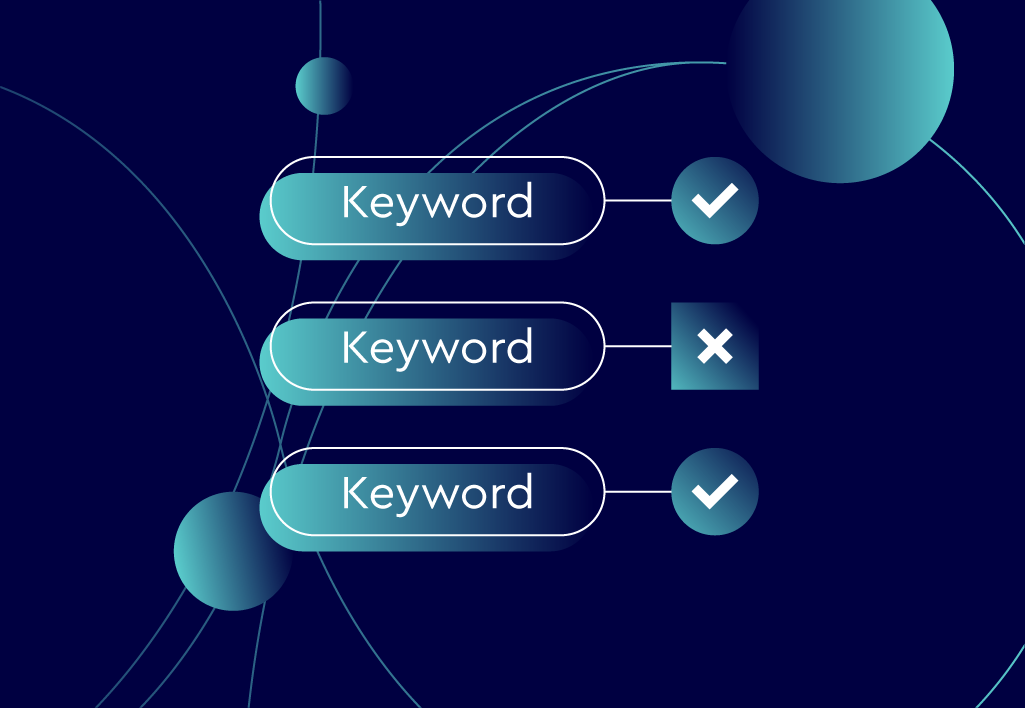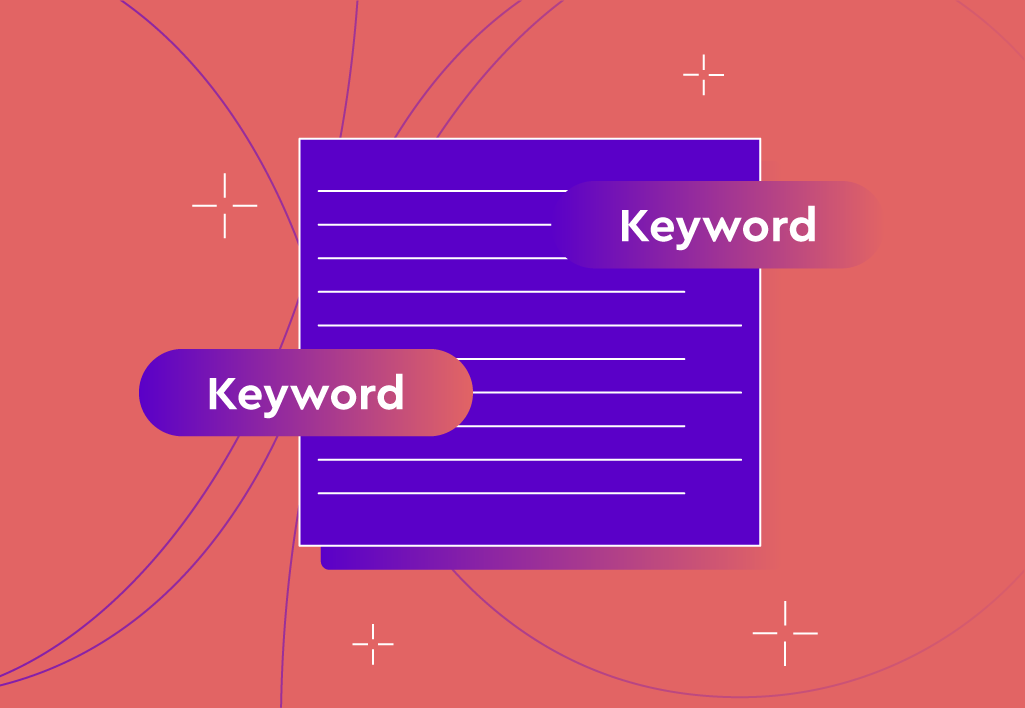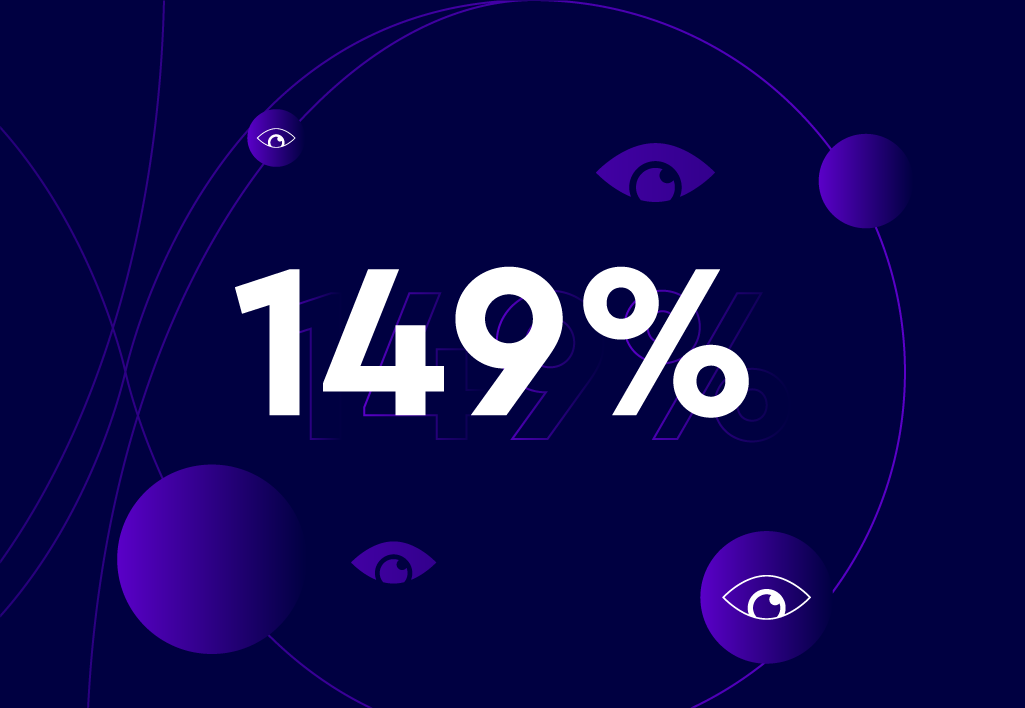
A Complete Guide to Keyword Research (2023)
Struggling with keyword research? Finding it difficult to rank for your core business service or products? You’re not alone. Many business owners face this challenge – they have a great product or service but can’t seem to rank for their key offerings.
It’s possible that your website isn’t optimised for search engines, and that’s where keyword research plays an important role.
As an SEO agency of strategists, technical experts and content writers, making your website stand out online is our speciality. So, if you’re still lost in the complex world of keyword research after this guide, get in touch – we’re happy to help.
In this guide, you’ll learn
- What keyword research is
- Why keyword research is integral to SEO
- Keyword types and their characteristics
- How to choose the right keywords
- The difference between high and low-difficulty keywords
- The importance of search volume
- How to target keywords with content
- Understanding search intent
- Embryo’s case study
Speak to Experts about Your SEO Campaign Today
Discover a team that puts keyword research at the heart of your digital campaigns by getting in touch today.

Paid marketing channels are crucial to The Range’s online success so finding an agency that understood that and would have the tools in place to take it to a new level was critical.
Not only are Embryo incredibly innovative and knowledgeable, but they used all that to tell a story about how their interpretation of PPC and paid social would be ideal for The Range.
What Is Keyword Research and Why Is It Important for SEO?
Keyword research is the backbone of any SEO strategy because it serves as the bridge between what people are searching for on Google, and the content on your website.
Simply put, keywords are the phrases and queries that individuals type into search engines to discover relevant information, answers to questions and solutions to their problems, needs & desires.

What to Do Before You Start Your Keyword Research
Before you can start using SEO tools to discover keywords, you’ll need to take some time to brainstorm initial ideas about your business, website and buyer personas.
This is where keyword research starts to blossom, and it all starts with a thoughtful analysis of the following areas:
- Desired Keywords: Without using any tools, think about specific keywords you would ideally like to link to. These are the terms that best represent your business offerings. For now, it’s okay to settle for broader and more generic keywords.
- Buyer Personas: Delve into the mindset of your target audience. What keywords are they likely to use when searching for a website like yours? Would they use alternative phrases? What are their pain points and what would they Google to find a solution?
- Competitors: One of the most useful steps you can take to determine which keywords you’d like to target is competitor analysis.
- Geographic Focus: Determine if your target audience conducts location-specific searches. Are they seeking your website from a particular geographic area? This consideration can significantly impact the keywords you should prioritise.
Keyword research starts with asking yourself four questions:
- What keywords do you want your website to be found for?
- What keywords is your target audience likely to use to find your website?
- What specific terms or phrases relate to your key products, services or content?
- Is your target audience from a particular area and searching for your website from a specific location?
Once you’ve answered these questions, you’ll have a solid foundation to start your keyword research.
Understanding the keywords you want to target, the terms your audience is using, and the context in which they are searching will help you refine your SEO strategy and improve your website’s visibility in search engine results.
With this valuable information in hand, you can create content, optimise your pages, and make data-driven decisions to get your website seen by search engines (and most importantly, your audience!).
Keyword Types and Their Characteristics
Anyone looking to start researching keywords for their SEO strategy should be aware of keyword types. From branded keywords to niche and low-competition keywords, each type serves a different purpose.
The table below summarises just a handful of keyword types and their typical characteristics:
|
LONG-TAIL |
MEDIUM-TAIL | SHORT-TAIL |
LOCAL |
| 4 or more words | 2-3 words | 1-2 words | Include geographic modifiers |
| Often specific questions | High purchase intent | Initial research queries with lower purchase intent | High relevance for brick-and-mortar businesses |
| Lower search volume | 1 page can rank for numerous medium-tail words | Usually broad product names or brands | Often used by users with strong purchase intent |
| Usually part of a user’s research stage | Users may be searching for specific types of products | Highly competitive and high search volume | Can drive foot traffic and phone inquiries for local businesses |
| Can be leveraged for FAQs and customer support sections of a website | Can capture a broader audience compared to long-tail keywords | Potential for high traffic but lower conversion rates | Often targeted with location landing pages |
| Often low-difficulty keywords | Often medium-difficulty keywords | Very difficult keywords | Low competition and lower search volume |

How to Choose Keywords for Your Website
When conducting keyword research, there are several crucial factors to consider to ensure your SEO efforts are effective. These factors provide valuable insights into the competitiveness and potential of specific keywords, helping you make informed decisions.
So, let’s pretend you’re approaching keyword research for an eCommerce SEO strategy. One of your core categories and profitable sales areas is ‘dresses’. Naturally, you’ll enter your seed keyword into a keyword research tool.
Your seed keywords essentially form the basis of the research process and are broad terms that define your niche. From there, SEO tools will conduct further analysis into a larger list of keyword types, questions, related keywords and topics.
For every keyword you choose to analyse, most tools will provide you with an overview of various metrics. Here, we’ll focus on just a few of the most important.

Keyword Difficulty
The way keyword difficulty is usually measured is on a scale from 1 to 100. The higher the score, the harder it is to rank for a specific keyword. High-difficulty scores are determined by the quality and quantity of backlinks that the current top-ranking sites have (also known as sites with a high domain authority).
In most cases, you’ll find that websites dominating high-difficulty keywords in the SERP are your big industry players and popular brands.
So, why should you care? Keyword difficulty allows you to estimate and predict the time and effort it would take to rank high enough for your chosen keyword.
As a smaller site, going after a keyword considered low difficulty generally requires low effort and investment, meaning a higher chance of ranking in a faster space of time.
Should you choose high or low-difficulty keywords?
The answer to this question is entirely website and goal-dependent. Just because competition may be fierce, doesn’t mean you should go after it. Make judgments based on resources, priority, time scales and domain authority.
New sites with little to no backlinks have a very slim chance of ranking for ‘dresses’. However, building a content strategy around long-tail keywords with lower search volume should help you gain traffic and rankings much faster.
Whilst your low search volume or low-difficulty traffic comes in, you can focus your efforts on building out pages and content for the harder topics.
Remember: The most profitable, high purchase-intent keywords are often the hardest to rank for. But by producing valuable and relevant content in related areas for your target audience, you can build your website’s authority and gradually work your way up to more competitive keywords.

Search Volume
Search volume indicates how frequently a keyword is searched for on search engines each month. The number you are shown within an SEO tool suggests how popular that phrase might be, helping you to determine whether users are looking for particular content or not.
As part of your analysis of search volume, it’s also important to review any fluctuations and seasonal trends. Why? Your content strategy needs to account for the time it takes for content to rank for a certain keyword, meaning you’ll need to plan at least 6 months ahead before a seasonal keyword picks up.
Let’s say, for example, you sell knitted dresses. Over a typical year, the demand, and a result, the search volume, for dresses will change based on the weather.
Therefore, as an online retailer selling dresses, you’d likely focus on this category with useful supporting content around May or June. This strategic approach ensures your website gains sufficient momentum to rank prominently when the demand for winter dresses surges once again.
Are low and no search volume keywords worth considering?
It’s tempting to chase high-volume keywords in hopes of getting thousands of monthly visitors.
But don’t underestimate the potential of low-volume keywords.
In 2023 and beyond, your main focus should be delivering valuable content to your audience. If you’re sure your target users are searching for content you can provide, prioritise their needs over search volume.
Long-tail keywords or specific product/service queries often lead to higher conversion rates. That’s because these users have a clear idea of what they want and are ready to make a purchase or inquiry right away.
Picking the Right Keywords is Vital
By getting to know your brand our SEO team can ensure that the work produced targets the keywords that are going to bring your business revenue. To learn more, speak to our team today.

The team at Embryo is a joy to work with. They understand what we want to achieve as a business, their level of service is excellent, and they are constantly analysing metrics and data to ensure that together we overachieve in the performance of campaigns.
They have become a natural extension of my marketing department and I look forward to what the future brings.
Understanding Search Intent and Its Importance to Keyword Research
Search intent, often referred to as user intent, delves into the motivations driving a user’s search query. This understanding is crucial in understanding keywords and creating content that the user wants to see but also secures favourable rankings on search engines.
Essentially, targeting keywords relies heavily on your understanding of what users are looking for and presenting it in the right content form. This process becomes even more effective when you align it with different types of intent.
Google prioritises delivering relevant content to users. When your content aligns with search intent, it will be recognised as valuable – therefore ranking higher. Getting intent right means more visibility, organic traffic, and potential customers for your business.
-
Informational Intent
Users seeking information or answers to questions. They may be looking for explanations, how-tos, or general knowledge.
-
Navigational Intent
Users looking to navigate to a specific website or page. Users are looking to compare particular brands and searching for their names.
-
Commercial Intent
Users in the consideration stage, contemplate various options before making a decision. Content aimed at commercial intent often includes comparisons, reviews, and product information.
-
Transactional Intent
Users with a clear intention to make a purchase or take a specific action, such as signing up for a newsletter. Content designed for transactional intent should facilitate and encourage these actions.
How to Target Keywords with Content to Improve Traffic
When you’ve gathered a list of relevant keywords, you might be wondering how you fit them into the wider SEO and content strategy.
Google needs to see the keywords on your website to rank you for them. Therefore, you should map your keywords to each page on your website and work out which page you want to rank for each keyword.
Remember: Ranking for your target keywords does not happen overnight. It’s not possible to produce a couple of pieces of optimised content and gain hundreds of rankings.
That’s why creating a long-term (but flexible) strategy is crucial.
Below are three content types to consider when it comes to strategically targeting keywords.
But, beyond this, there are many other content types that you should consider in targeting your keywords. This could include case studies, brand pages, FAQs and product demo videos. The most important thing to consider before you produce a content type per keyword is the search intent.
1
Landing Pages
Typically, landing pages focus on your primary or “seed” keywords, which are short-tail, competitive and broader search terms. These pages act as key conversion points and offer comprehensive information about your services or product categories. They are prominently featured in the top menu navigation of your website, aiming to attract the most traffic and drive conversions, essentially serving as your website’s ‘money-making’ pages.
2
Product Pages
Product pages should target specific, product-related keywords. For instance, you might optimise them for high-purchase intent keywords like ‘red dress with black lace sleeves.’ While these keywords may not require a dedicated pillar page, they are essential for appearing in search engine results when potential customers are looking for a particular product.
3
Blogs
Blogs are created to provide user-centric content, offering valuable information to your audience at every stage of their buying journey. When creating blog posts, consider selecting various long-tail keywords and address the questions your audience frequently searches for. This approach ensures that your blog content has a better chance of appearing in the SERP when your target audience is looking for solutions related to your business offering.

Where to Include Keywords in Your Content
Once you’ve established a set of keywords per planned page, it’s time to plan and write the content.
First thing first: Don’t be tempted to stuff keywords anywhere and everywhere – this will be perceived as spammy by users and Google.
Targeting keywords effectively through content means being mindful of relevancy and user experience. Think about how your keywords would most naturally slot into the copy you’re creating. Also, think about contextualising keywords to make them appear less ‘obvious’. For example,
“Accountancy Manchester” is a much less effective title in Google’s metaphorical eyes than “Award Winning Accountancy in Manchester”.
As a general rule, always try to fit the seed and secondary keywords in the following places on every piece of content:
- Page title
- URL slug
- Website menu (or navigation)
- H1
- Meta description
- 1-2 headings
- In the first 100 words
- Weaved throughout naturally

Case Study: How Embryo Leveraged Keyword Research to Increase BCB’s Page Views by 149%
Navigating the crypto industry is no easy task. However, our SEO and Content teams used comprehensive keyword research as a gateway to helping BCB Group dominate their very complex and competitive industry.
The goal: Help BCB improve their topical authority, rank for core service keywords, increase organic traffic and become digital leaders in the crypto space.
Key stats:
- 43% increase in keyword rankings
- 67 position 1-3 keywords secured
- 3523+ landing page views
How we did it: Keyword research was the backbone of our content strategy. Through an in-depth investigation of niche keywords used by users to find BCB’s services, we created a bank of evergreen, long-form, optimised content.
A large part of our strategy incorporated Embryo’s exclusive tool, Interming. With this handy tool, we had access to useful SERP data, enabling us to identify the most important keywords for BCB. This not only provided us with valuable insights into our ranking potential compared to competitors but directly shaped our overarching digital marketing strategy.
Want more information? Check out our BCB case study.
Put Your Website’s SEO in Embryo’s Safe Hands
In this guide, we’ve merely scraped the surface of keyword research. As you now know, numerous factors impact a website’s potential to rank for various keywords. On top of general metrics, there are ongoing Core Algorithm updates, shifts in search behaviour, and competitors enhancing their own SEO activity.
If your business needs expert direction, speak to our SEO team about our approach. We’re here to help you achieve results and get your website seen.
Additional Resource: Expand Your Keyword Research Knowledge

There aren't enough superlatives to describe the Embryo team and the digital marketing solutions they've provided for our business. We've been working with the team for over 18 months, and I can say that they are an extension of our in-house marketing team and consistently go above and beyond with service levels, creative solutions and input, as well as supporting our day-to-day efforts.